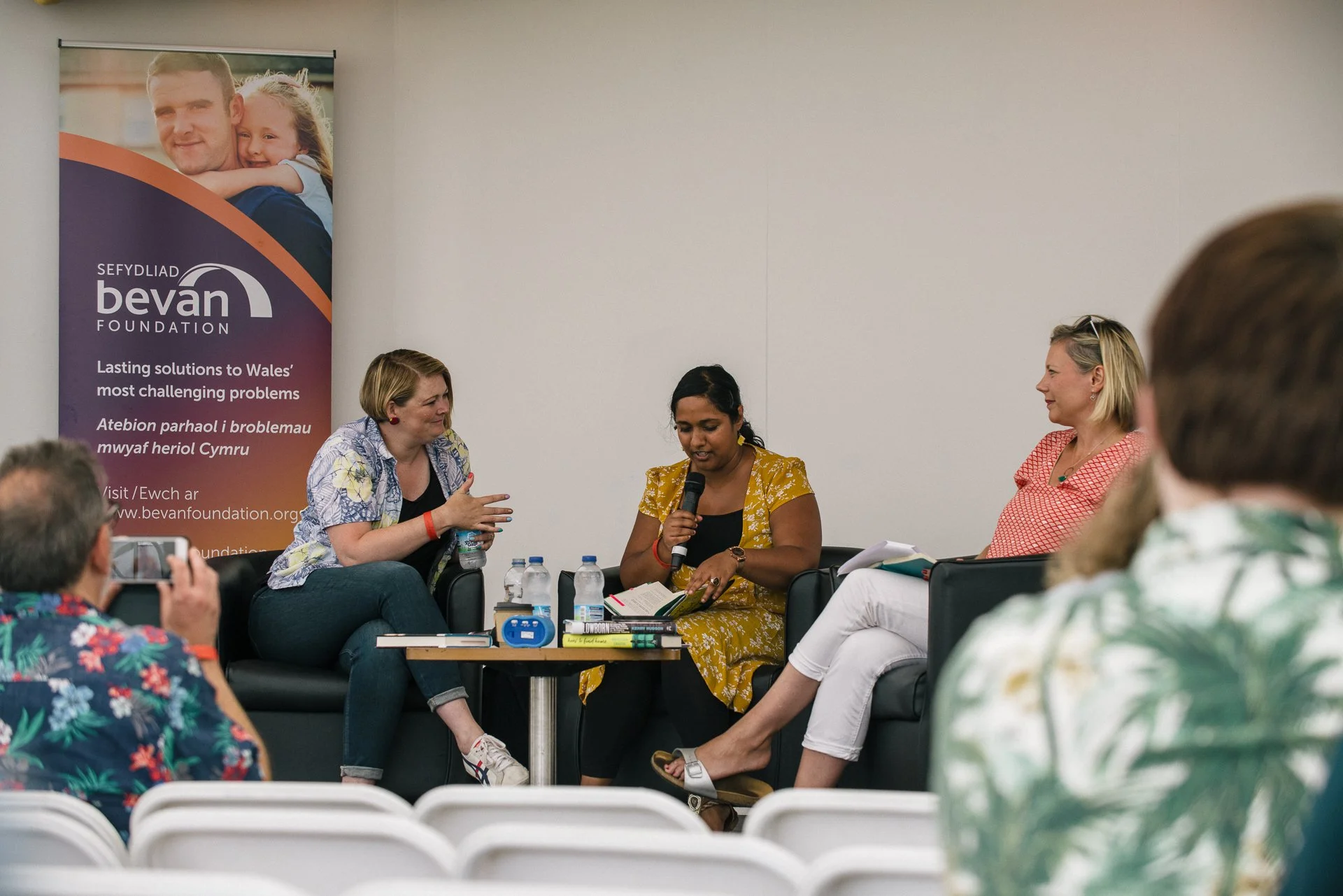Unlocking the stories that can tackle poverty and homelessness
|Image: Daniel Lipinski
Sport has the ability to change perceptions, and promote compassion and activism, but what role can and does literature and telling stories play in advocating change?
The best stories are the ones that challenge you, that encourage you to re-consider yourself, whether it be the way in which you acknowledge a person experiencing homelessness, the language you use to speak about someone with lived experience of homelessness, or even the images you have of that person in your head.
At the Bevan Tent in Bute Park, award-winning novelists Kerry Hudson (author of Low Born) and Mahsuda Snaith (author of How to Find Home) explored the way in which storytelling shifts attitudes and builds support for action on poverty and homelessness.
“The amazing thing about stories is the way in which it can create empathy and put you in someone else’s shoes. You can be that person for a little bit and, once you have had that experience you can view the world in a bit of a different way. If through stories people learn how to empathise with someone, it can create anger, change, campaigning, and activism,” Snaith says.
Low Born, described as “an all-encompassing, grinding and often dehumanising portrayal of poverty in today’s Britain”, is Hudson’s own biographical story of growing up in poverty. How to Find Home tells the story of Molly, how Molly interacts with the world, and how it reacts to her, as a homeless woman.
Both Hudson and Snaith explain how giving voice to people with lived experience of homelessness through stories creates “nuanced and complex depictions of what it means to be poor”. Even sharing the vocabulary that someone experiencing poverty comes across while navigating our current social security system—‘points benefit’ and ‘top-ups’—is hugely important. And acknowledging that homelessness exists in both urban and rural environments, that hidden homelessness exists, and it can look different person to person.
Storytelling can happen formally and informally from a novel to a Netflix series to an online tweet. A story has power, but sometimes its potential is abused. Social media can often be a problematic platform for storytelling, spreading negative perceptions, promoting stigma and hostile opinions. Issues also arise in storytelling by promoting the ‘poverty safari’ type stories—the ‘heart-wrenching’, ‘othering’ stories that provoke sympathy over empathy. Articles and works of fiction are informative but don’t have the same impact as a novel, which allows us to follow someone on their journey and be in their shoes, explains novelist Snaith. On considering what a storyteller needs to really think about before putting their words out to a public audience, Snaith explains.
“An important thing is to make sure that the story is genuine and comes from the people who are living those lives. It can be devastating for someone if their story isn’t told properly, and if new stereotypes are made because a story hasn’t been researched properly. The process requires consultation and involvement from those with lived experience to ensure that a damaging story isn’t told.”
When storytelling is done well, it provides optimism for a better future for all.
“For society to prosper, we need to massively improve our current social security system. In our current political climate this is more important than ever. We can do this by giving voice to those who are marginalised.”
To close the conversation, Snaith shares the poignant last sentence with us from her book: “We saw each other, flesh and blood, and in that there was something beautiful.”
Words: Deborah May
Images: Daniel Lipinski / Soda-Visual



